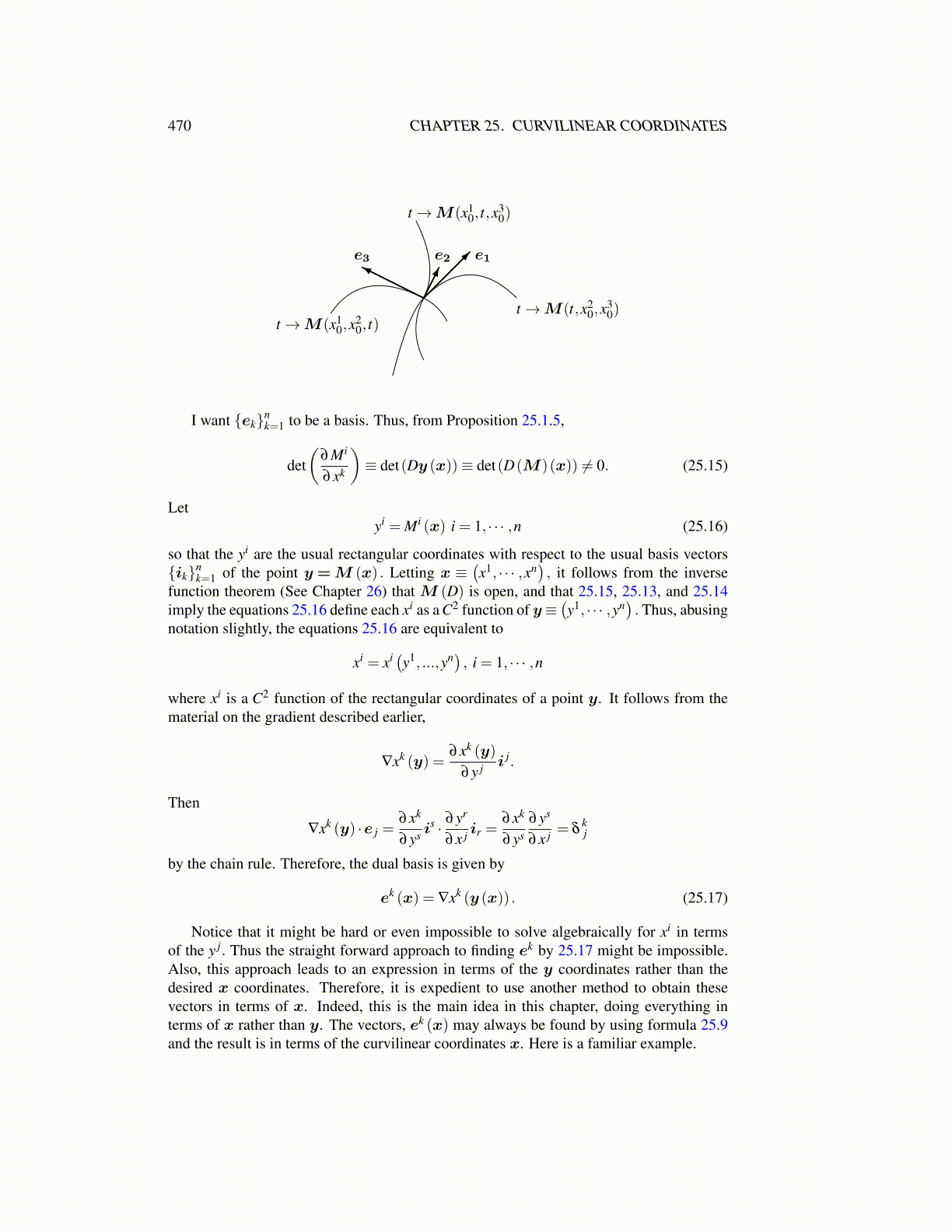
470 CHAPTER 25. CURVILINEAR COORDINATES
e1e2e3
t→M(x10,x
20, t)
t→M(t,x20,x
30)
t→M(x10, t,x
30)
I want {ek}nk=1 to be a basis. Thus, from Proposition 25.1.5,
det(
∂Mi
∂xk
)≡ det(Dy (x))≡ det(D(M)(x)) ̸= 0. (25.15)
Letyi = Mi (x) i = 1, · · · ,n (25.16)
so that the yi are the usual rectangular coordinates with respect to the usual basis vectors{ik}n
k=1 of the point y =M (x) . Letting x ≡(x1, · · · ,xn
), it follows from the inverse
function theorem (See Chapter 26) that M (D) is open, and that 25.15, 25.13, and 25.14imply the equations 25.16 define each xi as a C2 function of y≡
(y1, · · · ,yn
). Thus, abusing
notation slightly, the equations 25.16 are equivalent to
xi = xi (y1, ...,yn) , i = 1, · · · ,n
where xi is a C2 function of the rectangular coordinates of a point y. It follows from thematerial on the gradient described earlier,
∇xk (y) =∂xk (y)
∂y j i j.
Then
∇xk (y) ·e j =∂xk
∂ys is · ∂yr
∂x j ir =∂xk
∂ys∂ys
∂x j = δkj
by the chain rule. Therefore, the dual basis is given by
ek (x) = ∇xk (y (x)) . (25.17)
Notice that it might be hard or even impossible to solve algebraically for xi in termsof the y j. Thus the straight forward approach to finding ek by 25.17 might be impossible.Also, this approach leads to an expression in terms of the y coordinates rather than thedesired x coordinates. Therefore, it is expedient to use another method to obtain thesevectors in terms of x. Indeed, this is the main idea in this chapter, doing everything interms of x rather than y. The vectors, ek (x) may always be found by using formula 25.9and the result is in terms of the curvilinear coordinates x. Here is a familiar example.